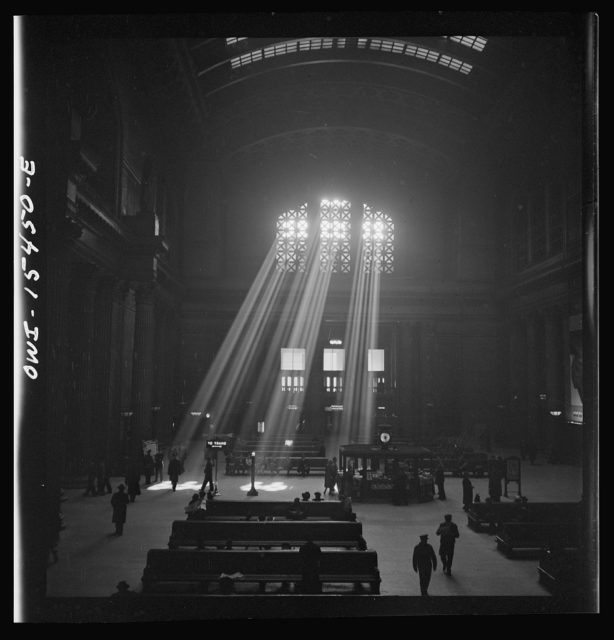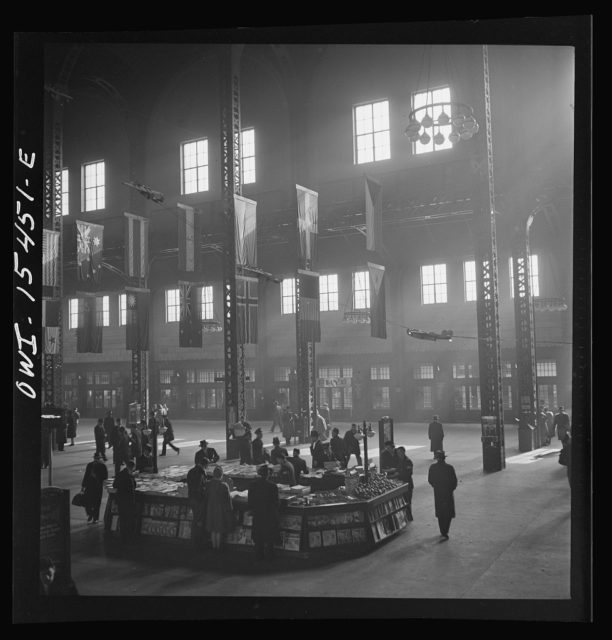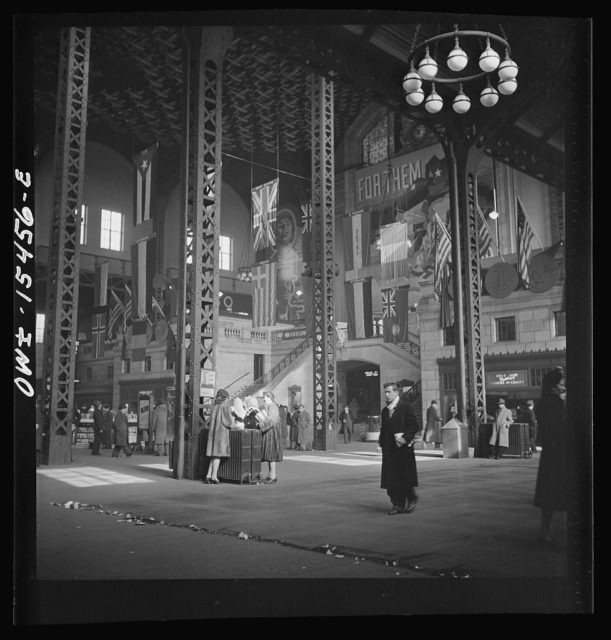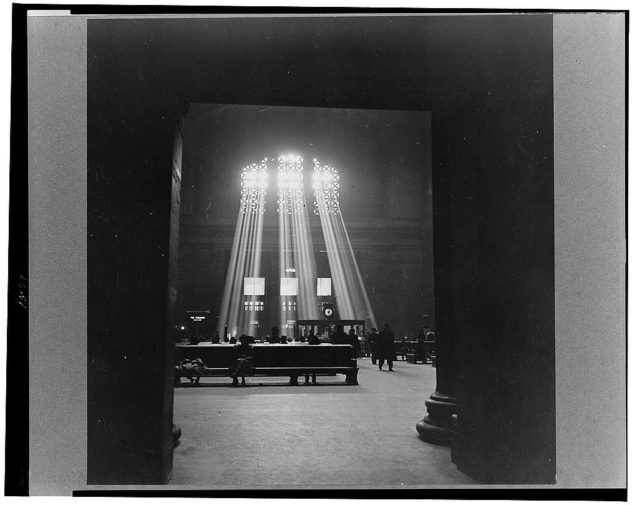In many of the photos currently circulating the web, this shadowy railroad station reveals an “angelic light” that emerges from the dark, brightly illuminating the faces of the passengers. For quite some time, these photos have been grabbing attention with their contrasts and dramatic visual appeal. We see these pictures as rather romantic and poetic today; however, they portray the Chicago Union Station as it was during World War II, and the reason for “angelic” light is less romantic and more sinister than it first appears.
Opened in 1925, the Chicago Union Station is a major railroad station that was built to replace an earlier depot constructed in 1881. It is the city’s main terminal for commuter trains, as well as the only intercity rail terminal in Chicago. Built between West Jackson Boulevard and West Adams Street, just outside the Chicago Loop and on the bank of the Chicago River, the depot is the third-busiest railway station in the United States. Only Penn Station and Grand Central Terminal, both in New York City, are busier.

It is Amtrak’s fourth-busiest terminal of all, managing nearly 120,000 passengers on an average weekday. It is one of Chicago’s most illustrious buildings, reflecting the city’s strong architectural legacy and momentous accomplishments. At its peak during the Second World War, Union Station managed as many as three hundred trains and one hundred thousand passengers daily, many of them soldiers.
The terminal’s luxurious Beaux-Arts principal waiting room, otherwise known as the “Great Hall”, is one of the United States’ most distinguished interior public spaces. It has a vaulted skylight, lobbies, terraces, marble stairways, and many sculptures. During wartime, the glorious art-deco skylight was blacked out to make the building less conspicuous to enemy aircraft in the event of an attack.
Therefore, the enormous terminal space was illuminated only by beams of sunlight streaming through the side windows of the cavernous building. It is this effect that makes the popular internet photos appear so other-worldly.

In 1991, the public space of the terminal was renovated by Lucien Lagrange Associates. Included was a restoration of the “Great Hall” to its former glory and a renovation of the magnificent skylight, which had not seen any change since 1943. In 2010, Amtrak, the current owner of Chicago Union Station, announced that a new air conditioning system for the terminal, and in particular the “Great Hall”, would be installed; the last such system was put in before the 1960s.

Following the September 11th terrorist attacks, two taxi cab entrances were closed by Amtrak due to security concerns. Passenger traffic has steadily increased and now is exceeding the capacity for which the 1991 renovation was designed.
To ensure that Union Station will be able to meet the expected growth in passenger numbers, mostly due to the proposed Chicago Hub Network of high-speed trains, many improvements have been planned for the near future.

The American Planning Association (APA), an organization representing urban planning, designated Chicago Union Station as one of America’s “Great Places” in 2012. APA’s “Great Places” program puts emphasis on public spaces, neighborhoods, and streets around America that demonstrate exemplary planning, character, and quality.
These “Great Places” are unique in their sense of community, historical significance, cultural impact, and vision. Other criteria required by APA include accessibility, unique architectural characteristics, community involvement, and functionality. APA has particularly awarded Union Station the title of “Great Public Space” for promoting community continuity and social activity. These public spaces are attractive, safe, inviting, and well-maintained both functionally and visually. Additionally, local history and culture are exhibited here.
